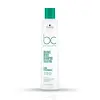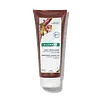What's inside
What's inside
 Key Ingredients
Key Ingredients

 Benefits
Benefits

 Concerns
Concerns

 Ingredients Side-by-side
Ingredients Side-by-side

Water
Skin ConditioningCocamidopropyl Betaine
CleansingLauryl Glucoside
CleansingSodium Lauroyl Methyl Isethionate
CleansingSodium Methyl Cocoyl Taurate
CleansingSodium Chloride
MaskingSodium Methyl 2-Sulfolaurate
CleansingCreatine
Skin ConditioningSoy Amino Acids
Skin ConditioningWheat Amino Acids
Skin ConditioningSerine
MaskingThreonine
Arginine Hcl
Skin ConditioningParfum
MaskingSodium Benzoate
MaskingDisodium 2-Sulfolaurate
CleansingCitric Acid
BufferingSodium Methyl Isethionate
EmulsifyingPhenoxyethanol
PreservativeLauric Acid
CleansingCoconut Acid
CleansingSodium Sulfate
Glycerin
HumectantC12-18 Fatty Acids Methyl Esters
PerfumingHydroxypropyl Guar Hydroxypropyltrimonium Chloride
Zinc Laurate
Trisodium Ethylenediamine Disuccinate
Linalool
PerfumingSodium Laurate
CleansingUrea
BufferingCitronellol
PerfumingAlpha-Isomethyl Ionone
PerfumingSaccharide Hydrolysate
HumectantPropylene Glycol
HumectantPEG-120 Methyl Glucose Dioleate
EmulsifyingGlycine
BufferingAlanine
MaskingMagnesium Aspartate
Skin ConditioningSodium Hydroxide
BufferingBenzyl Alcohol
PerfumingPotassium Sorbate
PreservativeWater, Cocamidopropyl Betaine, Lauryl Glucoside, Sodium Lauroyl Methyl Isethionate, Sodium Methyl Cocoyl Taurate, Sodium Chloride, Sodium Methyl 2-Sulfolaurate, Creatine, Soy Amino Acids, Wheat Amino Acids, Serine, Threonine, Arginine Hcl, Parfum, Sodium Benzoate, Disodium 2-Sulfolaurate, Citric Acid, Sodium Methyl Isethionate, Phenoxyethanol, Lauric Acid, Coconut Acid, Sodium Sulfate, Glycerin, C12-18 Fatty Acids Methyl Esters, Hydroxypropyl Guar Hydroxypropyltrimonium Chloride, Zinc Laurate, Trisodium Ethylenediamine Disuccinate, Linalool, Sodium Laurate, Urea, Citronellol, Alpha-Isomethyl Ionone, Saccharide Hydrolysate, Propylene Glycol, PEG-120 Methyl Glucose Dioleate, Glycine, Alanine, Magnesium Aspartate, Sodium Hydroxide, Benzyl Alcohol, Potassium Sorbate
Water
Skin ConditioningHydroxypropyl Starch Phosphate
Cetearyl Alcohol
EmollientBehenamidopropyl Dimethylamine
EmulsifyingGlycerin
HumectantCoco-Caprylate/Caprate
Emollient1,2-Hexanediol
Skin ConditioningCinchona Succirubra Bark Extract
Skin ConditioningLeontopodium Alpinum Flower/Leaf Extract
Skin ConditioningCaffeine
Skin ConditioningBiotin
AntiseborrhoeicNiacinamide
SmoothingPanthenol
Skin ConditioningHelianthus Annuus Seed Oil
EmollientAlcohol
AntimicrobialBenzoic Acid
MaskingCeteareth-33
CleansingCitric Acid
BufferingParfum
MaskingLactic Acid
BufferingPantolactone
HumectantPotassium Sorbate
PreservativePyridoxine Hcl
Skin ConditioningSodium Benzoate
MaskingTocopherol
AntioxidantTrisodium Ethylenediamine Disuccinate
Water, Hydroxypropyl Starch Phosphate, Cetearyl Alcohol, Behenamidopropyl Dimethylamine, Glycerin, Coco-Caprylate/Caprate, 1,2-Hexanediol, Cinchona Succirubra Bark Extract, Leontopodium Alpinum Flower/Leaf Extract, Caffeine, Biotin, Niacinamide, Panthenol, Helianthus Annuus Seed Oil, Alcohol, Benzoic Acid, Ceteareth-33, Citric Acid, Parfum, Lactic Acid, Pantolactone, Potassium Sorbate, Pyridoxine Hcl, Sodium Benzoate, Tocopherol, Trisodium Ethylenediamine Disuccinate
Ingredients Explained
These ingredients are found in both products.
Ingredients higher up in an ingredient list are typically present in a larger amount.
Citric Acid is an alpha hydroxy acid (AHA) naturally found in citrus fruits like oranges, lemons, and limes.
Like other AHAs, citric acid can exfoliate skin by breaking down the bonds that hold dead skin cells together. This helps reveal smoother and brighter skin underneath.
However, this exfoliating effect only happens at high concentrations (20%) which can be hard to find in cosmetic products.
Due to this, citric acid is usually included in small amounts as a pH adjuster. This helps keep products slightly more acidic and compatible with skin's natural pH.
In skincare formulas, citric acid can:
While it can provide some skin benefits, research shows lactic acid and glycolic acid are generally more effective and less irritating exfoliants.
Most citric acid used in skincare today is made by fermenting sugars (usually from molasses). This synthetic version is identical to the natural citrus form but easier to stabilize and use in formulations.
Read more about some other popular AHA's here:
Learn more about Citric AcidGlycerin is already naturally found in your skin. It helps moisturize and protect your skin.
A study from 2016 found glycerin to be more effective as a humectant than AHAs and hyaluronic acid.
As a humectant, it helps the skin stay hydrated by pulling moisture to your skin. The low molecular weight of glycerin allows it to pull moisture into the deeper layers of your skin.
Hydrated skin improves your skin barrier; Your skin barrier helps protect against irritants and bacteria.
Glycerin has also been found to have antimicrobial and antiviral properties. Due to these properties, glycerin is often used in wound and burn treatments.
In cosmetics, glycerin is usually derived from plants such as soybean or palm. However, it can also be sourced from animals, such as tallow or animal fat.
This ingredient is organic, colorless, odorless, and non-toxic.
Glycerin is the name for this ingredient in American English. British English uses Glycerol/Glycerine.
Learn more about GlycerinParfum is a catch-all term for an ingredient or more that is used to give a scent to products.
Also called "fragrance", this ingredient can be a blend of hundreds of chemicals or plant oils. This means every product with "fragrance" or "parfum" in the ingredients list is a different mixture.
For instance, Habanolide is a proprietary trade name for a specific aroma chemical. When used as a fragrance ingredient in cosmetics, most aroma chemicals fall under the broad labeling category of “FRAGRANCE” or “PARFUM” according to EU and US regulations.
The term 'parfum' or 'fragrance' is not regulated in many countries. In many cases, it is up to the brand to define this term.
For instance, many brands choose to label themselves as "fragrance-free" because they are not using synthetic fragrances. However, their products may still contain ingredients such as essential oils that are considered a fragrance by INCI standards.
One example is Calendula flower extract. Calendula is an essential oil that still imparts a scent or 'fragrance'.
Depending on the blend, the ingredients in the mixture can cause allergies and sensitivities on the skin. Some ingredients that are known EU allergens include linalool and citronellol.
Parfum can also be used to mask or cover an unpleasant scent.
The bottom line is: not all fragrances/parfum/ingredients are created equally. If you are worried about fragrances, we recommend taking a closer look at an ingredient. And of course, we always recommend speaking with a professional.
Learn more about ParfumPotassium Sorbate is a preservative used to prevent yeast and mold in products. It is commonly found in both cosmetic and food products.
This ingredient comes from potassium salt derived from sorbic acid. Sorbic acid is a natural antibiotic and effective against fungus.
Both potassium sorbate and sorbic acid can be found in baked goods, cheeses, dried meats, dried fruit, ice cream, pickles, wine, yogurt, and more.
You'll often find this ingredient used with other preservatives.
Learn more about Potassium SorbateSodium Benzoate is a preservative. It's used in both cosmetic and food products to inhibit the growth of mold and bacteria. It is typically produced synthetically.
Both the US FDA and EU Health Committee have approved the use of sodium benzoate. In the US, levels of 0.1% (of the total product) are allowed.
Sodium benzoate works as a preservative by inhibiting the growth of bacteria inside of cells. It prevents the cell from fermenting a type of sugar using an enzyme called phosphofructokinase.
It is the salt of benzoic acid. Foods containing sodium benzoate include soda, salad dressings, condiments, fruit juices, wines, and snack foods.
Studies for using ascorbic acid and sodium benzoate in cosmetics are lacking, especially in skincare routines with multiple steps.
We always recommend speaking with a professional, such as a dermatologist, if you have any concerns.
Learn more about Sodium BenzoateTrisodium Ethylenediamine Disuccinate is used to help stabilize a product.
It is a chelating agent, meaning it helps prevent metal ions from binding to other ingredients. This prevents unwanted reactions in products. Metal ions can come into a product via the water ingredient. They are found in trace amounts and are not known to be harmful.
Water. It's the most common cosmetic ingredient of all. You'll usually see it at the top of ingredient lists, meaning that it makes up the largest part of the product.
So why is it so popular? Water most often acts as a solvent - this means that it helps dissolve other ingredients into the formulation.
You'll also recognize water as that liquid we all need to stay alive. If you see this, drink a glass of water. Stay hydrated!
Learn more about Water